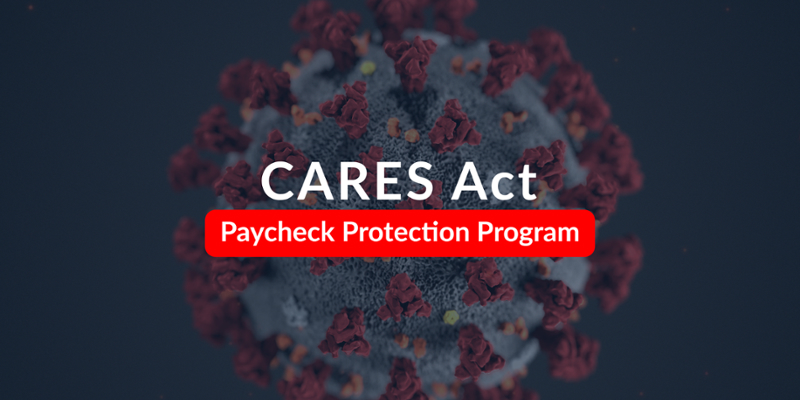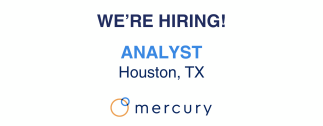The following was originally posted on LinkedIn by Mercury Fund Managing Director, Aziz Gilani.
The Paycheck Protection Program has arguably been the fastest consumption of Federal dollars in US history. I’ve devoted the last three weeks to learning everything I could about this program to help my portfolio companies navigate it. In the process I’ve been on NPR, hosted town halls, been interviewed for newspapers, and even briefed a few Congressional staffs. Now that there is a vibrant debate on if the program should be replenished, I wanted to share my thoughts about it.
I should also mention that everyone involved in PPP operated with the best of intentions. Congress acted swiftly and decisively in an era of gridlock. Folks from the SBA and Treasury pulled numerous “all nighters” to get the program launched. The front-line bank reps I’ve dealt with have all been professional. My trade group, the NVCA, and numerous lawyers have also worked tirelessly to try to make this all work.*

Unprecedented Pandemic
As the country began shutting down, many feared that virtually all small businesses would fail. Senator Marco Rubio immediately proposed a federal stimulus specifically to help small businesses weather the storm. He called it the “Keeping American Workers Paid and Employed Act” and the goal was obvious, to give money to small businesses so that they wouldn’t lay off their workers. The timeline is murky because everything happened so fast. A version of the bill was initially presented on March 19th as a section of the larger CARES Act. The Senate’s Small Business Committee then released a detailed report on March 25th, and the CARES Act was unanimously passed by the Senate later that day. It became law on March 27th. $350 billion of the $2 trillion law was devoted to direct assistance to small businesses in the form of forgivable loans, as long as the funds were used for payroll expenses.
Underfunded
The SBA estimates that there are 30 million small businesses in the US employing 60 million employees. To pay these employees for two months, as the PPP aims to do, would require at least $600B, so the initial allocation of $350B was inadequate. To solve this, the bill was designed to be “first come first served.” in which any business that applied after the money ran out would be out of luck. The law made no attempt at prioritization, nor did the SBA or Treasury.
The Devil is in the Details
The idea behind PPP was simple, to get money into the hands of small businesses as fast as possible. The decision to funnel that money through the Small Business Administration’s (SBA) 7a loan program proved to be a complete disaster.
The 7a loan program is a regulatory mine-field of contradictory requirements. Loans typically require a personal guarantee, meaning that if the funds can’t be repaid, all of the owners of a business have to repay them. Additionally, the SBA normally enforced vaguely defined “affiliate rules” to prevent businesses with outside investors from participating in its programs. Those rules served a clear purpose for normal 7a loans, but, frankly, were a major encumbrance to getting PPP off the ground.
Congress thought it had solved these problems with a few fixes. First, they removed all “personal guarantee provisions” from the loan program. Second, they waived “affiliate rules” for large numbers of businesses. Lastly, they gave the Secretary of the Treasury wide latitude to interpret their intent with ensuing regulations.
The Regulatory Problems
Almost immediately, the SBA’s regulations almost killed this program before it started. Close to 100 members of Congress realized that their attempts to waive “affiliate rules” were incomplete, and pleaded with Secretary Mnuchin to waive them comprehensively. Additionally, the National Venture Capital Association organized a letter signed by over 120 grassroots entrepreneurship organizations from 39 states asking for the same.
Because the Treasury was intent on providing PPP assistance as fast as possible, with the goal of handing out checks just seven days after the bill was passed, everything was slapped together in an ad-hoc fashion. Conflicting regulations and rules were issued, rescinded, and issued again in the crazy leadup to the program launch. The Program is currently operating under an “interim final rule” that still has blank sections within it. During the program launch, Treasury Secretary Mnuchin admitted that the rules wouldn’t be ready for all businesses types in time for the program launch.
Initially, startups with investors had no idea if they could qualify for the program. Despite the pleading, the Treasury never came out with definitive guidance on the topic, leaving lawyers to sift through administrative and case law to create their own guidance to these businesses. But even after determining if they could qualify for the program because of their size, businesses still had to determine if they could qualify for the program due to “need.” This was, again, confusing at best. Specifically applicants for PPP had to certify that, “current economic uncertainty makes this loan request necessary to support the ongoing operations.” To date, no regulatory guidance has been issued on what exactly that means.
Breaking The Banks
In its best year, the SBA lent $30B through the 7a lending program. PPP attempted to ram $350B through the 7a system in just a few weeks. In retrospect, this was never going to work. The Treasury attempted to solve this problem by allowing any FDIC bank to issue PPP loans. To do so, the banks were asked to submit applications through the SBA’s “E-Tran” portal. This would prove to be a colossal mistake.
It is important to remember that an SBA 7a loan is completely different from a PPP loan. Those loans require collateral, guarantees, and the submission of ancillary documents that PPP didn’t require. Additionally, PPP dwarfed the volumes of 7a lending by several orders of magnitude. The bloated E-Tran system never had a chance and consistently failed under the load. Scared by the potential volume of applications, banks tried to build dedicated portals to handle the onslaught of small businesses. Unfortunately, these portals couldn’t interface with E-Tran until several days after the program launch. Banks like Comerica never got them to work. Other banks solved the issues with sheer manpower, asking their customers to refrain from any non-PPP requests. Speaking with a rep from a major bank this weekend, he assured me that he “never wanted to live through this again.”
The End of the Beginning
Underfunded, managed with broken regulations, and submitted using a broken portal, PPP ran out of funding in just 11 days and processed just 1.6M applications out of a projected 30M eligible small businesses. PPP effectively broke the US banking system for 2 weeks, and we haven’t even gotten to the hard part yet. The CARES Act requires that the money be primarily used for payroll purposes, and has a complex system of “loan forgiveness” tied to meeting certain criteria. No one has any illusions about “forgiveness” working smoothly.
What’s next?
I don’t envy Congress. Small businesses are failing all over the US creating record unemployment levels. Stimulus is clearly needed, but is PPP the correct answer? Treasury is asking Congress for another $250B to replenish the program, although it is unclear if that is close to enough. If they do, one would hope that Congress helps fix the regulatory logjam that crippled the first phase of the program by eliminating or radically simplifying the “affiliate rule.” And hopefully the E-Tran system is either simplified or scaled up for it’s new role to manage PPP.
But these questions lead to the obvious next question of, “Why use private banks?” Senator Hawley of Missouri and Rep Jayapal of CA have both questioned why we should continue to run these funds through the SBA. Instead of going through the charade of a loan that is then forgiven, why not just get the IRS to cut a check to every small business to cover two months of payroll based on the previous year’s 940/941 filing? This would save the banking sector from the brain damage of a second round of PPP while allowing small businesses to get badly needed aid much faster. This is exactly what European countries are doing with great success.
Regardless of which way Congress goes, by either reforming the failures of PPP, or by launching a new program, stimulus is needed NOW. The American economy is dying and doing nothing is the only wrong decision.



